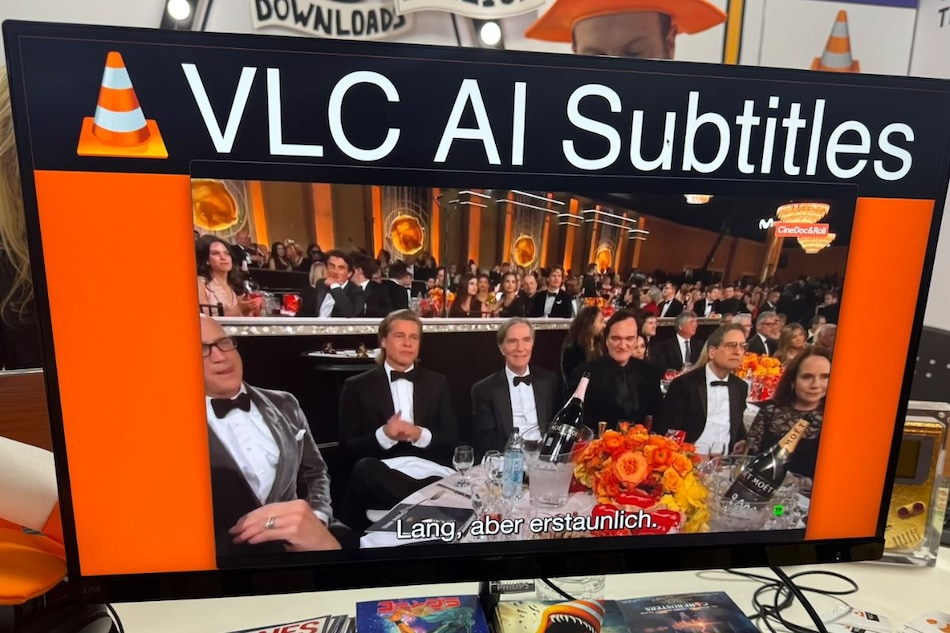VLC Media Player, the widely-used open-source platform developed by VideoLAN, is set to revolutionize the way we experience subtitles. During the recently concluded Consumer Electronics Show (CES) 2025, VideoLAN unveiled an innovative AI-powered subtitle feature. This new capability allows users to generate subtitles dynamically while watching videos, with added support for real-time translation in multiple languages. Notably, this cutting-edge feature operates entirely offline, utilizing open-source and localized large language models (LLMs). However, the release date for the feature has not yet been announced.

AI-Generated Subtitles in VLC Media Player
AI-generated subtitles are rapidly becoming an essential feature across various platforms. Companies like Samsung have introduced Vision AI technology, which can create real-time subtitles for displays, while Google added the Expressive Captions feature to devices running Android 14 or later in the United States.
Building on this trend, VideoLAN president Jean-Baptiste Kempf provided a glimpse of VLC’s AI subtitle functionality in a post on X (formerly Twitter). He emphasized that the technology relies on local and open-source AI models to deliver robust, privacy-focused features.
What Are Open-Source AI Models?
Open-source AI models are freely available to the public. Developers can incorporate these models into their software without paying licensing fees to the creators or associated organizations. Examples of such models include:
- Meta’s Llama 3.1 405B
- Mixtral 8x22B
- Alibaba’s DeepSeek
VideoLAN is leveraging similar open-source models (though the specific model remains undisclosed) to integrate this AI-powered feature directly into VLC Media Player. Since the functionality operates locally, users won’t need cloud-based support, ensuring both privacy and cost-efficiency.
>>>934864 Replacement Battery for iData 95V 95S 95W PAD
Offline Capability: A Game-Changer
One standout feature of VLC’s AI-generated subtitles is its ability to work offline. This innovation aligns with VideoLAN’s mission to reduce reliance on expensive cloud-based operations. According to a statement from the team:
“The goal is to not depend on an expensive cloud operation!”
This offline feature is particularly beneficial for users with limited internet access or privacy concerns, as all data processing occurs locally on the device.
Language Support and Expansion Plans
During the CES 2025 showcase, VideoLAN demonstrated the new feature in several languages, including:
- English
- French
- Hebrew
- German
- Japanese
Kempf revealed plans to expand this functionality to support more than 100 languages in the future. While the specific timeline for this rollout remains unclear, the promise of such broad language support highlights the project’s commitment to accessibility and inclusivity.
Will VLC’s AI Features Impact System Requirements?
A common concern with AI-powered features is their impact on system performance. While VideoLAN has not explicitly addressed whether the AI-generated subtitles will require higher system resources, the team emphasized its focus on optimizing efficiency to ensure compatibility with existing setups without significant upgrades.
>>>BT01310AIQ7 Replacement Battery for Seuic AUTOID Q7
What This Means for VLC Users
The introduction of AI-powered subtitles and translations marks a significant step forward for VLC Media Player. Key benefits include:
- Dynamic Subtitle Generation: Real-time creation of subtitles while watching videos.
- Real-Time Translation: Instant translation into multiple languages without requiring an internet connection.
- Privacy and Security: Local processing ensures user data remains secure.
- Cost-Effectiveness: Open-source AI models eliminate licensing fees and cloud costs.
Looking Ahead
While VideoLAN has yet to announce an official release date, the AI subtitle feature has the potential to reshape the media player landscape. By combining cutting-edge AI with the simplicity and versatility of VLC, VideoLAN is poised to set a new standard for accessibility and convenience in media consumption.